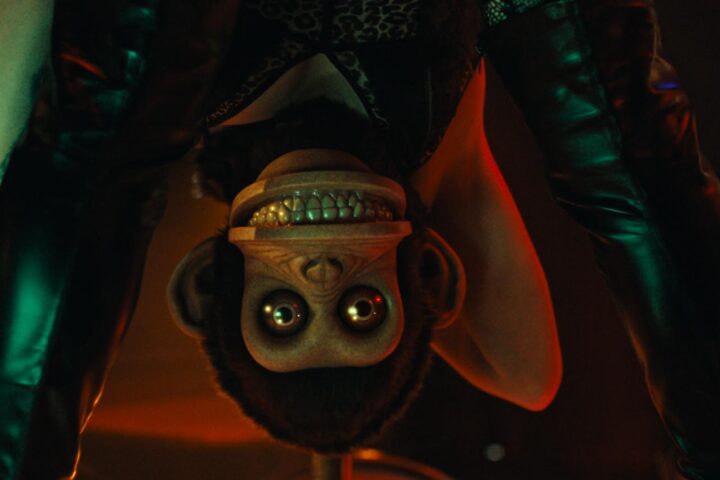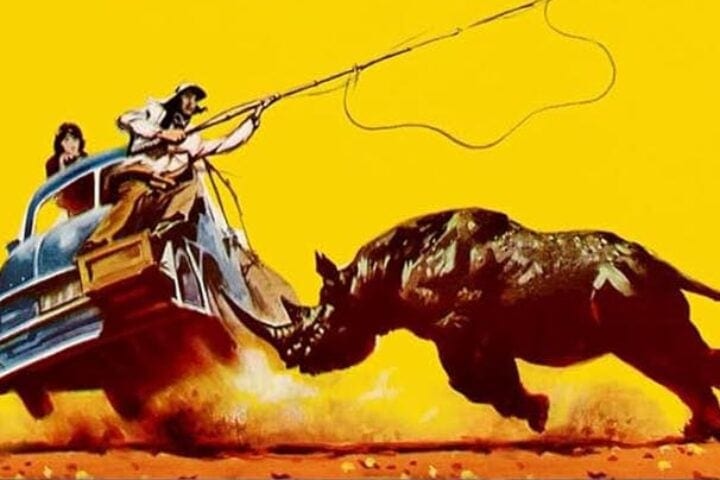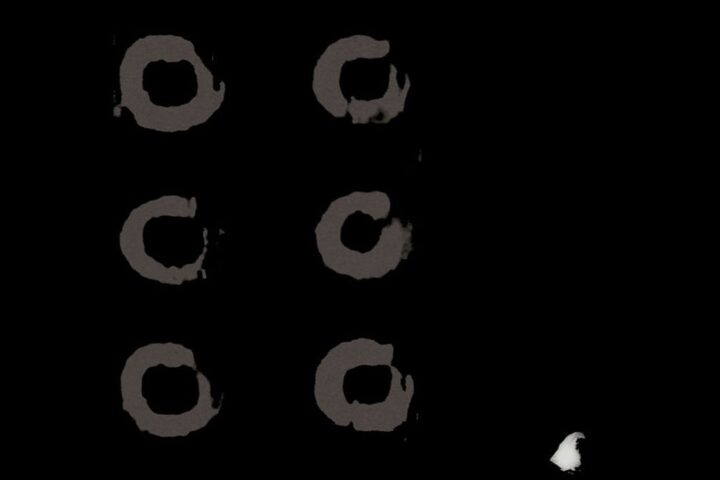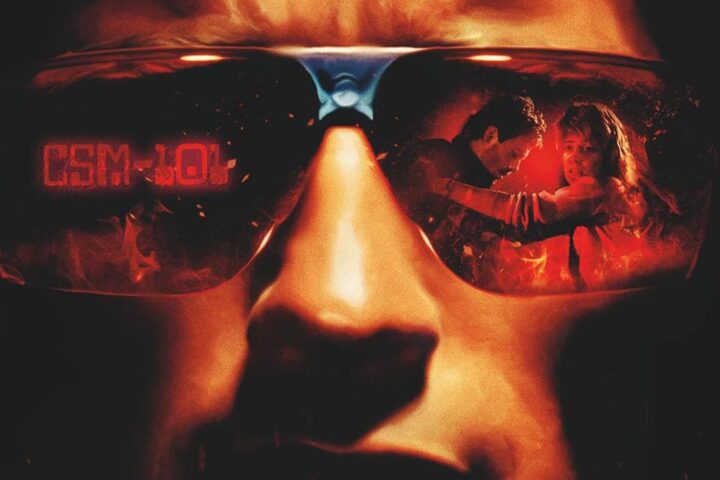Hollywood’s pre-Code era saw filmmakers venturing out on the frontiers of free expression, testing the limits of humor and taste in their depictions of social and sexual mores with relatively little organized interference. While the Hays Code wasn’t strictly enforced until 1934, there were instances before then when Will Hays’s power, along with the loudly professed moral outrage of various individual state censorship boards, was used to directly alter the content of motion pictures, including Howard Hawks’s influential gangster film Scarface.
After being greeted with initial handwringing over its supposed glorification of crime and violence, producer Howard Hughes caved to demands from the Motion Pictures Producers and Distributors of America to add a declamatory prologue calling on the federal government to deal with organized grime, reshoot a different ending that was more harshly judgmental of its protagonist, and tack on an unnecessary subtitle, The Shame of a Nation, to the title card in certain markets. This knee-jerk reaction from censors to Scarface is a testament to the raw, visceral power of its images, which, more often than not, suggest violence rather than directly depict it, even in the uncensored version, which thankfully remains intact.
Hawks’s almost expressionistic use of shadows and rapid-fire montage—as in the bone-chilling scene where Tony (Paul Muni) and his men drive around the northside of Chicago assassinating rival gang leader Tom Gaffney’s (Boris Karloff) men—brings an almost maniacal energy to the film. This remarkable sequence, clearly an inspiration for the famed baptism scene from The Godfather, is so unsettling not because of the violence that’s suggested, but because of Hawks’s compression of time and action, following the bombing of a building with a thrilling flurry of drive-by shootings, car crashes, and other collateral damage. Impressive for both its sheer efficiency and brute force, this sequence also perfectly embodies the ethos of its antihero, whose rise to the top of Chicago’s criminal underworld is explicitly connected to the flashing, almost-taunting words on a billboard outside his apartment window: “The World Is Yours.”
One major change willingly made to Scarface to appease the censors—a speech at a Citizens Committee meeting that’s as pleasantly surprising for its anti-gun sentiments as it is loathsome for its anti-immigrant rhetoric—suggests that organized crime is the result of external, anti-American influences. But Scarface otherwise takes a far more pessimistic view of America, linking Tony’s greed and obsessive lust for power with the country’s de facto ethic of rugged individualism and granting of the American dream to all who work hard enough to achieve it.
It’s a message that obviously resonated with moviegoers entering the third year of the Great Depression, but Scarface is never weighed down too much by its social commentary. In fact, it’s quite tonally dexterous. Not only does Hawks work wonders with expressive shadows and fluid camerawork (by Lee Garmes and L. William O’Connell), most eloquently evidenced in the film’s three-minute opening shot and the brief but shocking take on the St. Valentine’s Day Massacre, there’s also a good deal of offbeat, borderline slapstick, humor weaved into the film.
From Muni’s simianesque lumbering throughout the frame, wielding a tommy gun with all the wide-eyed glee of a kid on Christmas morning, to Vince Barnett, as Tony’s imbecilic secretary, fumbling to answer the phone and take a message, the film doesn’t lack for moments of absurd levity. Muni and the filmmakers’ uncanny ability to walk this imperceptible line between comedy and tragedy and create an antihero who’s grotesque yet still somewhat sympathetic (certainly aided by screenwriter Ben Hecht) is key to what makes Scarface continue to feel so bracingly modern. But it certainly doesn’t hurt that, while the film’s namesake was initially a not-so-subtle reference to Al Capone, Tony is of a hypermasculine, rapacious breed of man who, despite the claims of the Citizens Committee, is distinctly American, and would continue to be in the 21st century. Which is to say, the world belongs to him.
Image/Sound
Taken from a duplicate 35mm negative, this new 4K restoration of Scarface looks quite good, with a few allowances made for the film’s age. The famous chiaroscuro imagery is rendered with a nimble balance of light and shadow. The blacks are rich and ravishing, with no detectable crush, and facial and clothing details are extraordinarily palpable. At times, the image look soft and hazy, as this transfer lacks the revelatory sharpness that one sometimes experiences from modern transfers of older movies, but, again, this film is over 90 years old. Healthiness and vitality have been prioritized over crispness, and that’s to Criterion’s credit.
The English monaural track is trickier for me to evaluate. Full disclosure: Across various versions, I’ve always found the dialogue of Scarface difficult to understand, due to the actors’ rapid-fire line delivery and the film’s early sound recording techniques. This track doesn’t clear that issue up, which I’m assuming isn’t correctible without altering the film’s aural DNA. But the action sounds—from the blazing of the tommy guns to the shattering of glass to the crashing of cars and dumping of bodies—are vivid and immersive.
Extras
A new conversation between critic Megan Abbott and actor Bill Hader is exhilarating for its casualness. They don’t speak like film scholars, but like smart, regular people who love movies. Abbott and Hader touch on many elements of the film, and are especially cogent on the underrated Paul Muni and his mold-shattering performance in Scarface. A new program with Lea Jacobs offers a revelatory look at how studios adjusted for the addition of sound to moves, especially the challenge of pacing movies that now had to stop for dialogue. Jacobs illustrates Howard Hawks’s brilliance at entwining action and speech, and at fashioning montages of various speeds that hurtle us through the narrative. It’s a truly first-rate piece of film criticism. A leaflet featuring an essay by critic Imogen Sara Smith rounds out a slim but substantial package.
Overall
Ninety-plus years have done little to dilute the swaggering power of Howard Hawks’s Pre-code American gangster masterpiece.
Since 2001, we've brought you uncompromising, candid takes on the world of film, music, television, video games, theater, and more. Independently owned and operated publications like Slant have been hit hard in recent years, but we’re committed to keeping our content free and accessible—meaning no paywalls or fees.
If you like what we do, please consider subscribing to our Patreon or making a donation.




